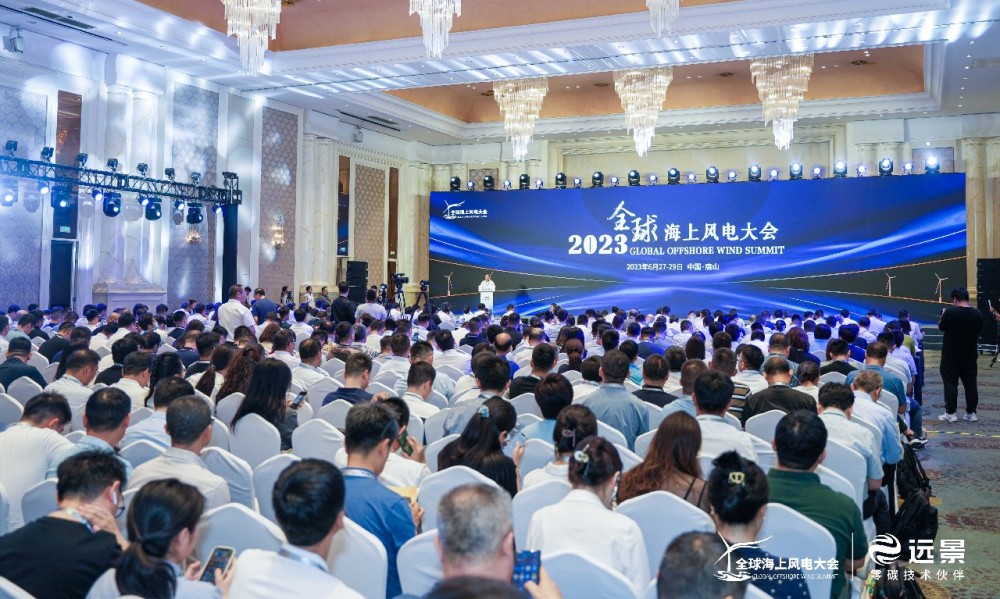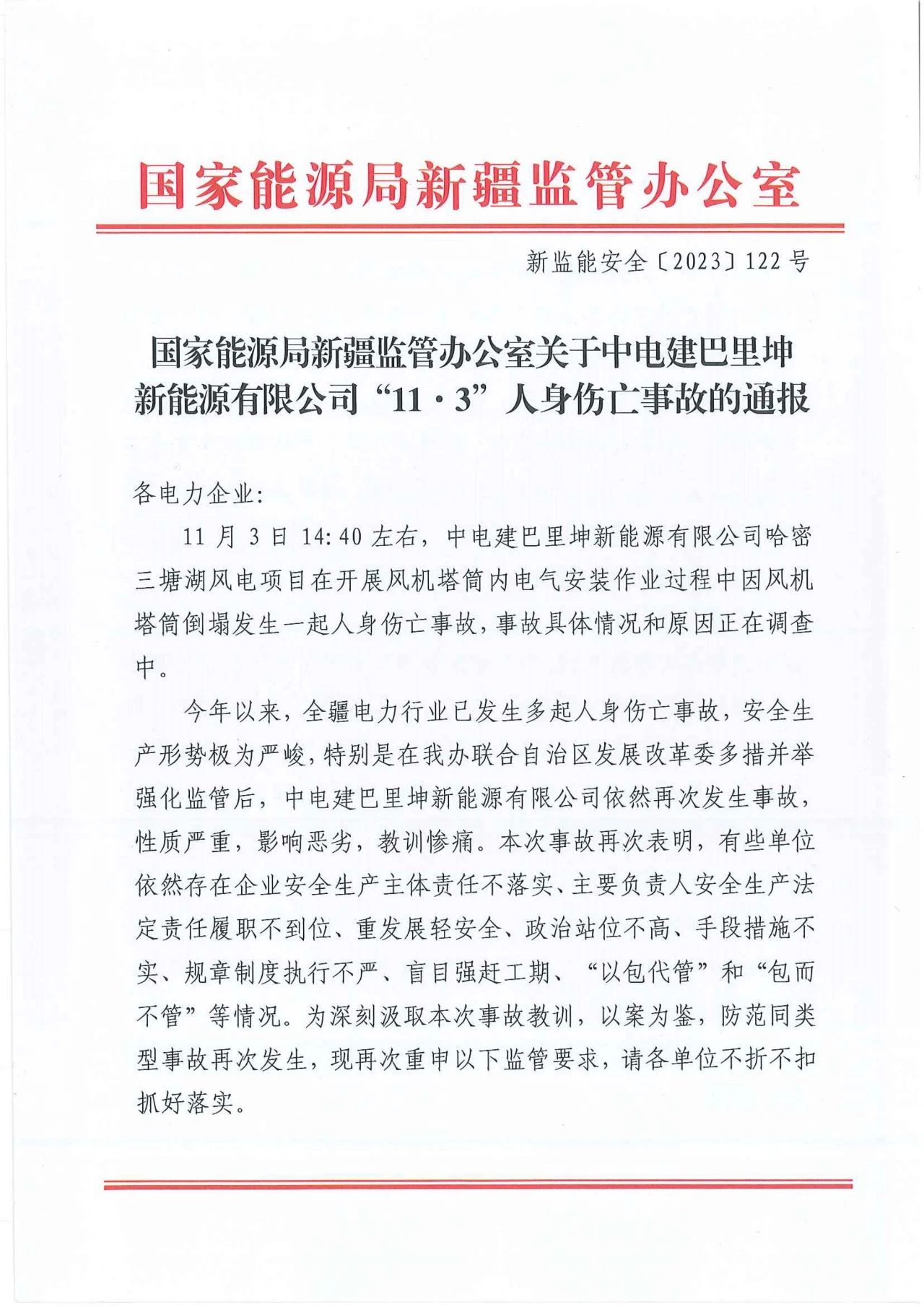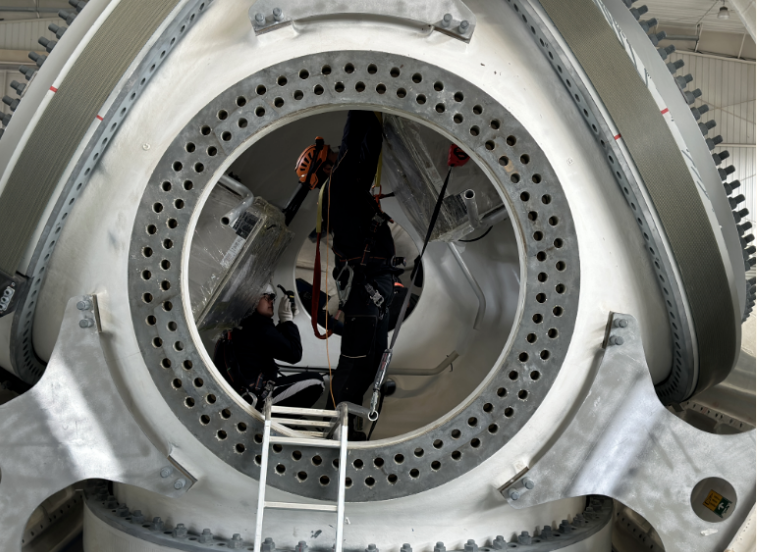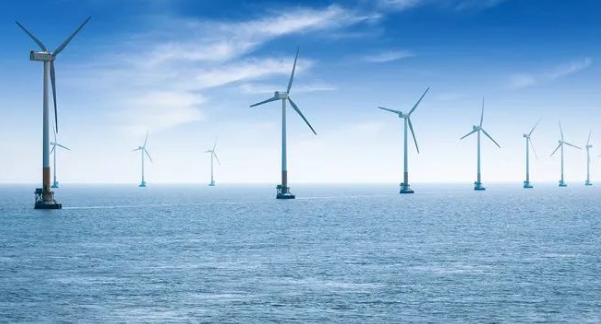对于海上风电来说,这是一个动荡的时代。
坐落在海岸沿线的大型风机群,可以利用近海吹来的强劲而稳定的风来发电。鉴于全球 40% 的人口居住在距离海洋60英里的范围内,近海风力发电场对全球清洁电力的供应大有裨益。
但近几个月来,由于成本飙升和供应链中的问题,世界各地的项目纷纷推迟甚至取消。这些挫折可能会影响到为减排所付出的努力,阻挠减少温室气体排放的进程?未来一年及以后,可能会有更多的项目被推迟或取消,但行业也会迎来新的起点,并持续发展相关技术。问题在于,目前所暴露的问题意味着——海上风电正行经减速带?还是预示着2024年该行业将驶离这条道路?
让我们来看看海上风电的前路何在。
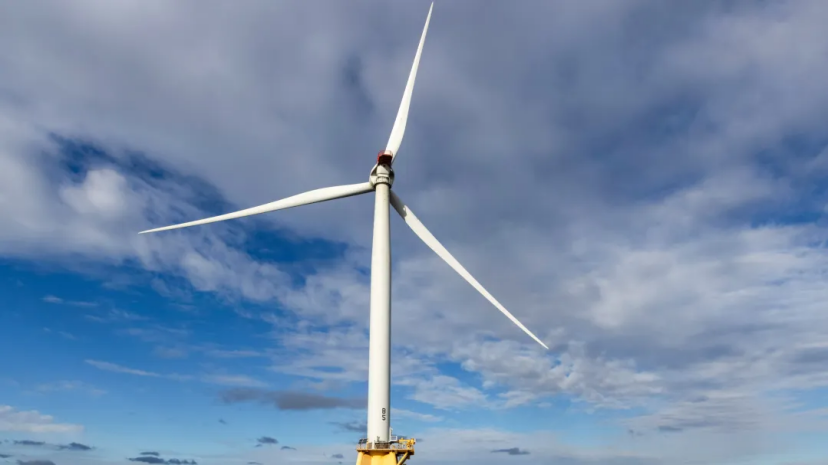
图片来源:MIT Technology Review
减速和挫折
10月底,风电巨头?rsted以利率上升、通货膨胀严重和供应链瓶颈为由,取消了备受期待的Ocean Wind 1和Ocean Wind 2项目。这两个项目本来将为新泽西州电网提供略大于2.2GW的电力,足以为超过一百万个家庭供电。?rsted是全球领先的海上风电开发商之一,该公司也曾入选《麻省理工科技评论》所评出的2023年15家值得关注的气候科技公司名单。
根据能源研究机构彭博新能源财经(BloombergNEF)的分析,让美国海上风电受挫的还不止是这些被关停的项目——2023年,超过12GW电力的合同要么被取消,要么被认为需要重新谈判。
BloombergNEF的风能分析师Chelsea Jean-Michel说:“部分问题在于项目通常是如何建设和融资的。”在确定建设风力发电场的地点后,开发商会签订合同将未来发出的电力出售。出售的价格在项目完工前几年就会被确定。对于目前正在进行的项目,它们的合同一般在2019年或2020年就已经谈妥了。
但在过去的五年里,发生了很多变化。根据美国清洁能源协会2023年的一份报告,从2019年1月到2022年底,风机建设中最重要的材料之一——北美和北欧的钢材,其价格上涨了50%以上。通货膨胀也导致了其他材料的价格上涨,而利率的提高意味着借贷更加昂贵。因此,现在的开发商认为:他们之前同意的价格现在已经不合理了。
该行业所面临的经济问题是全球性的。在英国,最近一次的海上风电租赁竞标中,没有竞标者参与。此外,有开发商在7月份取消了原计划在北海实施的一个大型项目。
中国在一片挣扎中脱颖而出。中国目前是全球最大的海上风电市场,装机容量占全球的近一半。快速发展和日益激烈的竞争实际上导致了那里一些项目的价格下跌。
成长的烦恼
尽管去年全球许多项目都遇到了挫折,但问题主要集中在包括美国在内的新兴市场。自新泽西州取消风电项目以来,问题就一直存在——在2024年的头几周,纽约多个项目的开发商要求重新合同的谈判,即使这些开发项目最终得以进行,进度也可能遭到延迟。
虽然美国超过10%的电力来自风力发电,但绝大部分还是依靠陆地风机进行发电。美国国家可再生能源实验室(National Renewable Energy Laboratory)海上风电首席工程师Walt Musial说,美国的海上风电市场至少比英国和丹麦等更成熟的国家落后十年。
未来一年存在一个悬而未决的问题是:在美国,该行业能以多快的速度提高产能来建造和安装风机。“美国海上风力发电的供应链基本上还处于起步阶段,实际上可以说并不存在。”Jean-Michel说。
这对一些项目来说是个问题,尤其是在安装风机所需的船舶方面。?rsted公司取消新泽西项目的原因之一就是缺乏所需的船只。
一项历史长达百年的法律规定:只有美国建造和运营的船只才能在美国港口运营,这让问题变得更加复杂。Musial说,美国的一些项目绕过了这一限制,在欧洲港口运营,并使用美国的大型驳船进行海上作业,但这会大大延缓施工时间。
2024年最大的进展之一可能是将有一艘美国建造的相关船舶完工,它可以帮助安装风机。这艘船正在得克萨斯州建造,到目前为止,多米尼昂能源公司已经为此花费了6亿多美元。经过延期,该船计划于2024年底完工。
税收抵免为美国建立海上风电供应链提供了额外的激励。《通胀削减法案》对海上风电项目的现有税收抵免延长了时间,并且扩大了范围,新风电场的建设成本可获得高达40%的抵免。然而,要想获得全额税收抵免,项目必须使用国产材料。这些材料的供应链加强将是一个漫长的过程,行业仍在努力适应现有条件。
尽管如此,美国海上风电仍有一些重要的进展显露。1月初,美国第二个大型海上风电场开始发电。2024年,预计将有几块海底区域通过竞标投入新的开发,其中包括大西洋中部和俄勒冈海岸附近,缅因州沿岸的区域预计也将在下一年可供使用。
但即使是这样的发展势头,也可能不足以让美国实现其在海上风电方面的目标。拜登政府设定的目标是到2030年时海上风力发电装机容量达到30GW,而根据彭博新能源财经的预测,到2030年,美国的海上风力发电装机容量可能只有该目标的一半左右,即16.4GW。
技术转型
虽然经济因素可能会成为今年海上风电发展的限制因素,但我们也将关注该行业的技术发展。
风机仍然沿用着几十年前的设计蓝图,但现在却越建越大,而且这一趋势可能还将持续下去。这是因为更大的风机往往效率更高,能以更低的成本产出更多电量。
十年前,海上风机的平均输出功率约为4MW。2022年,这一数字来到了略低于8MW。现在,风机制造商正在生产15MW的机型。这些巨大的结构开始与主要的地标性建筑相媲美,最近新安装的设备已经接近埃菲尔铁塔的高度。
2023年,风能巨头维斯塔斯公司测试了一个15MW的机型,该机型被誉为世界上功率最大的风机。该公司在年底获得了该设计的认证,它将用于丹麦的一个风力发电场,该发电场预计将于2024年开始投入建设。
此外,我们还将看到浮动式海上风机技术取得更多发展。虽然大多数部署在海上的风机都是固定在海底的,但有些地区——如美国西海岸,离岸水很深,风机无法固定在海底,浮动式海上风电成为机遇。
扩博智能,风电业务在全球:
扩博智能已与丹麦、巴西、美国、加拿大、越南、缅甸、泰国、希腊、罗马尼亚、葡萄牙、意大利等不同地区、不同规模的风电厂达成合作,共覆盖29个国家及地区,全球累计巡检80,000+台次,并创下最短巡检时间15分钟、单日陆上巡检记录31台、单日海上巡检记录18台等记录。目前,扩博智能向包括运营商、主机商、叶片制造商、第三方服务提供商等提供全方位的解决方案和服务。在全球各大洲与各主要区域,我们均有专业的智能巡检团队可为您提供一站式服务。
如果您在风电领域有任何想与我们交流的内容、看法与观点,请直接在本公众号后台或文章下方留言!也可邮件至Bob.li@clobotics.com了解更多信息。
英文原文
What’s next for offshore wind
New projects and financial headwinds will make 2024 a bumpy year for the industry.
It’s a turbulent time for offshore wind power.
Large groups of turbines installed along coastlines can harness the powerful, consistent winds that blow offshore. Given that 40% of the global population lives within 60 miles of the ocean, offshore wind farms can be a major boon to efforts to clean up the electricity supply around the world.
But in recent months, projects around the world have been delayed or even canceled as costs have skyrocketed and supply chain disruptions have swelled. These setbacks could spell trouble for efforts to cut the greenhouse-gas emissions that cause climate change.
The coming year and beyond will likely be littered with more delayed and canceled projects, but the industry is also seeing new starts and continuing technological development. The question is whether current troubles are more like a speed bump or a sign that 2024 will see the industry run off the road. Here’s what’s next for offshore wind power.
Speed bumps and setbacks
Wind giant ?rsted cited rising interest rates, high inflation, and supply chain bottlenecks in late October when it canceled its highly anticipated Ocean Wind 1 and Ocean Wind 2 projects. The two projects would have supplied just over 2.2 gigawatts to the New Jersey grid—enough energy to power over a million homes. ?rsted is one of the world’s leading offshore wind developers, and the company was included in MIT Technology Review’s list of 15 Climate Tech Companies to Watch in 2023.
The shuttered projects are far from the only setback for offshore wind in the US today—over 12 gigawatts’ worth of contracts were either canceled or targeted for renegotiation in 2023, according to analysis by BloombergNEF, an energy research group.
Part of the problem lies in how projects are typically built and financed, says Chelsea Jean-Michel, a wind analyst at BloombergNEF. After securing a place to build a wind farm, a developer sets up contracts to sell the electricity that will be generated by the turbines. That price gets locked in years before the project is finished. For projects getting underway now, contracts were generally negotiated in 2019 or 2020.
A lot has changed in just the past five years. Prices for steel, one of the most important materials in turbine construction, increased by over 50% from January 2019 through the end of 2022 in North America and northern Europe, according to a 2023 report from the American Clean Power Association.
Inflation has also increased the price for other materials, and higher interest rates mean that borrowing money is more expensive too. So now, developers are arguing that the prices they agreed to previously aren’t reasonable anymore.
Economic trouble for the industry is global. The UK’s last auction for offshore wind leases yielded no bidders. In addition, a major project that had been planned for the North Sea was canceled by the developer in July. Japanese developers that had jumped into projects in Taiwan are suddenly pulling out as costs shoot up in that still-developing market.
China stands out in an otherwise struggling landscape. The country is now the world’s largest offshore wind market, accounting for nearly half of installed capacity globally. Quick development and rising competition have actually led to falling prices for some projects there.
Growing pains
While many projects around the world have seen setbacks over the last year, the problems are most concentrated in newer markets, including the US. Problems have continued since the New Jersey cancellations—in the first weeks of 2024, developers of several New York projects asked to renegotiate their contracts, which could delay progress even if those developments end up going ahead.
While over 10% of electricity in the US comes from wind power, the vast majority is generated by land-based turbines. The offshore wind market in the US is at least a decade behind the more established ones in countries like the UK and Denmark, says Walt Musial, chief engineer of offshore wind energy at the US National Renewable Energy Laboratory.
One open question over the next year will be how quickly the industry can increase the capacity to build and install wind turbines in the US. “The supply chain in the US for offshore wind is basically in its infancy. It doesn’t really exist,” Jean-Michel says.
That’s been a problem for some projects, especially when it comes for the ships needed to install wind turbines. One of the reasons ?rsted gave for canceling its New Jersey project was a lack of these vessels.
The troubles have been complicated by a single century-old law, which mandates that only ships built and operated by the US can operate from US ports. Projects in the US have worked around this restriction by operating from European ports and using large US barges offshore, but that can slow construction times significantly, Musial says.
One of the biggest developments in 2024 could be the completion of a single US-built ship that can help with turbine installation. The ship is under construction in Texas, and Dominion Energy has spent over $600 million on it so far. After delays, it’s scheduled to be completed in late 2024.
Tax credits are providing extra incentive to build out the offshore wind supply chain in the US. Existing credits for offshore wind projects are being extended and expanded by the Inflation Reduction Act, with as much as 40% available on the cost of building a new wind farm. However, to qualify for the full tax credit, projects will need to use domestically sourced materials. Strengthening the supply chain for those materials will be a long process, and the industry is still trying to adjust to existing conditions.
Still, there are some significant signs of progress for US offshore wind. The nation’s second large-scale offshore wind farm began producing electricity in early January. Several areas of seafloor are expected to go up for auction for new development in 2024, including sites in the central Atlantic and off the coast of Oregon. Sites off the coast of Maine are expected to be offered up the following year.
But even that forward momentum may not be enough for the nation to meet its offshore wind goals. While the Biden administration has set a target of 30 gigawatts of offshore wind capacity installed by the end of the decade, BloombergNEF’s projection is that the country will likely install around half that, with 16.4 gigawatts of capacity expected by 2030.
Technological transformation
While economic considerations will likely be a limiting factor in offshore wind this year, we’re also going to be on the lookout for technological developments in the industry.
Wind turbines still follow the same blueprint from decades ago, but they are being built bigger and bigger, and that trend is expected to continue. That’s because bigger turbines tend to be more efficient, capturing more energy at a lower cost.
A decade ago, the average offshore wind turbine produced an output of around 4 megawatts. In 2022, that number was just under 8 MW. Now, the major turbine manufacturers are making models in the 15 MW range. These monstrous structures are starting to rival the size of major landmarks, with recent installations nearing the height of the Eiffel Tower.
In 2023, the wind giant Vestas tested a 15 MW model, which earned the distinction of being the world’s most powerful wind turbine. The company received certification for the design at the end of the year, and it will be used in a Danish wind farm that’s expected to begin construction in 2024.
In addition, we’ll likely see more developments in the technology for floating offshore wind turbines. While most turbines deployed offshore are secured in the seabed floor, some areas, like the west coast of the US, have deep water offshore, making this impossible.

